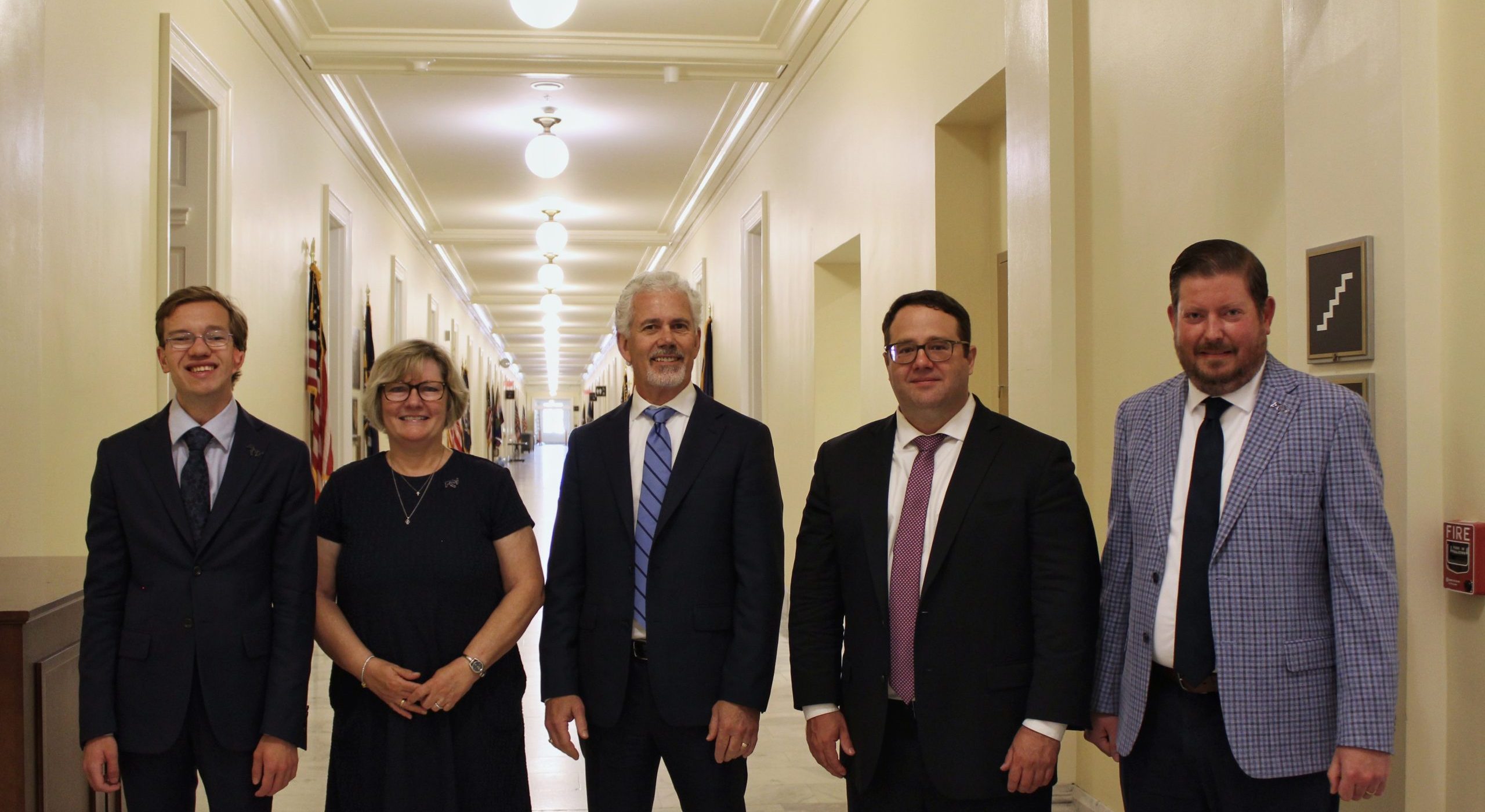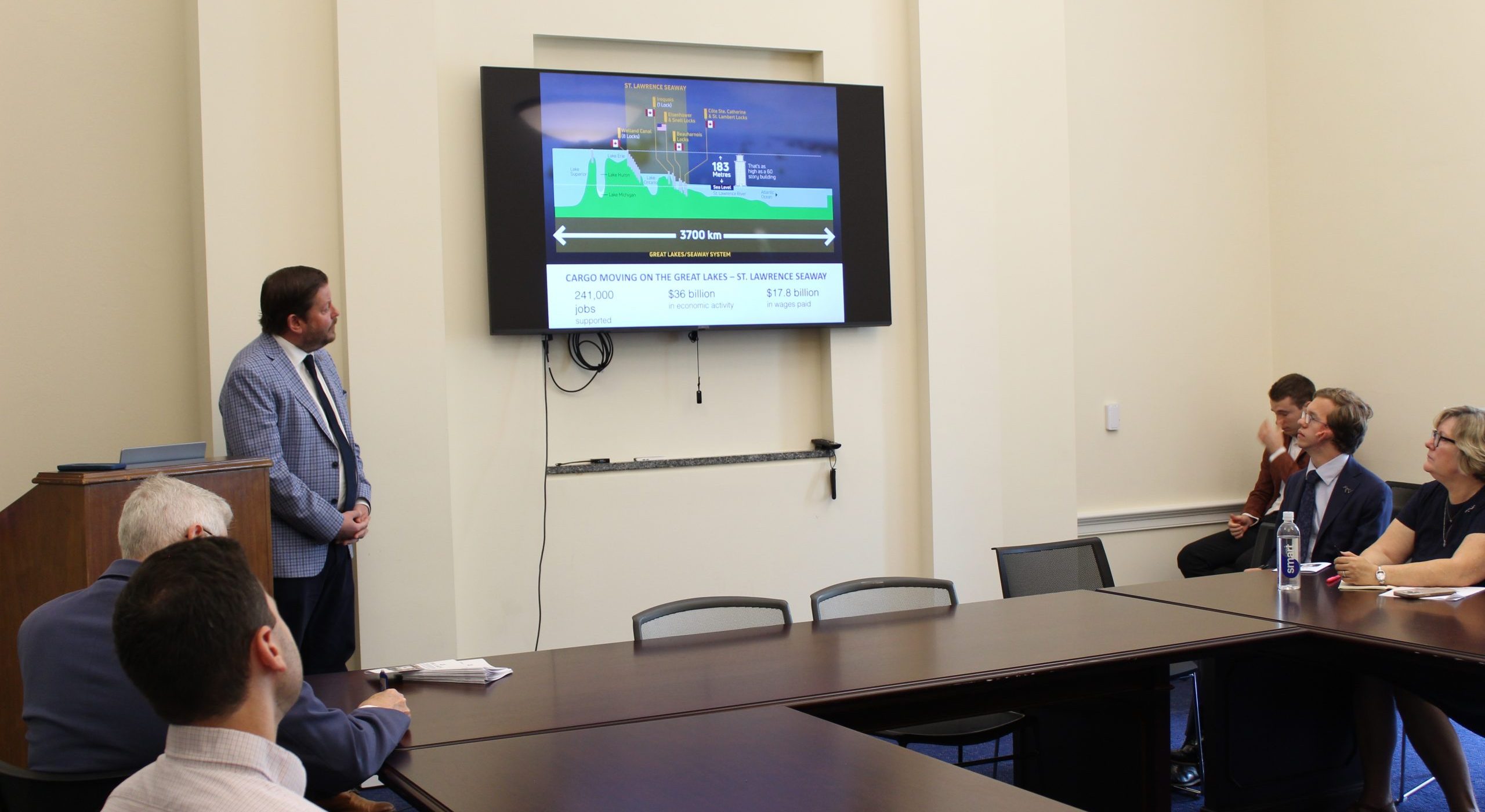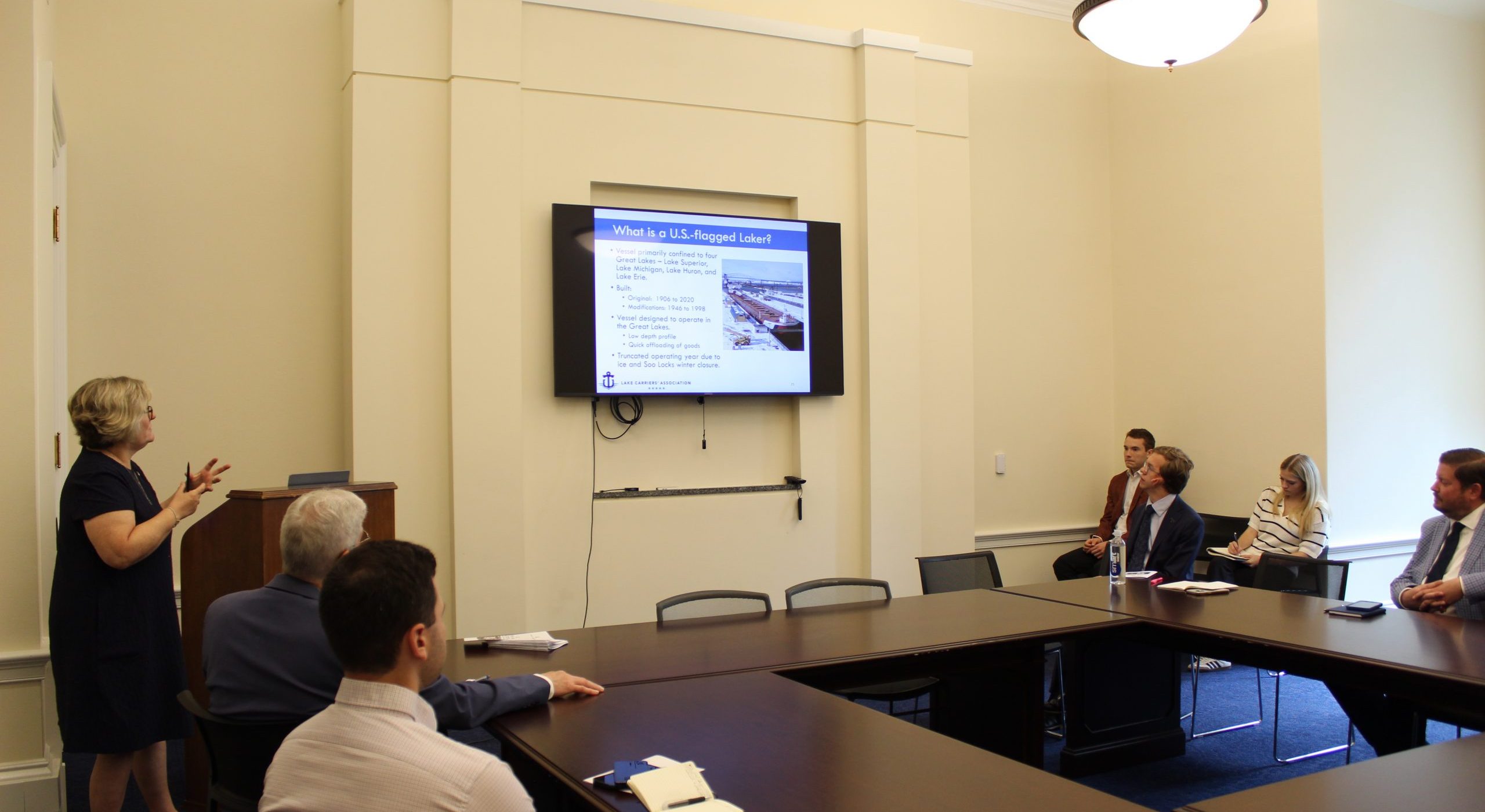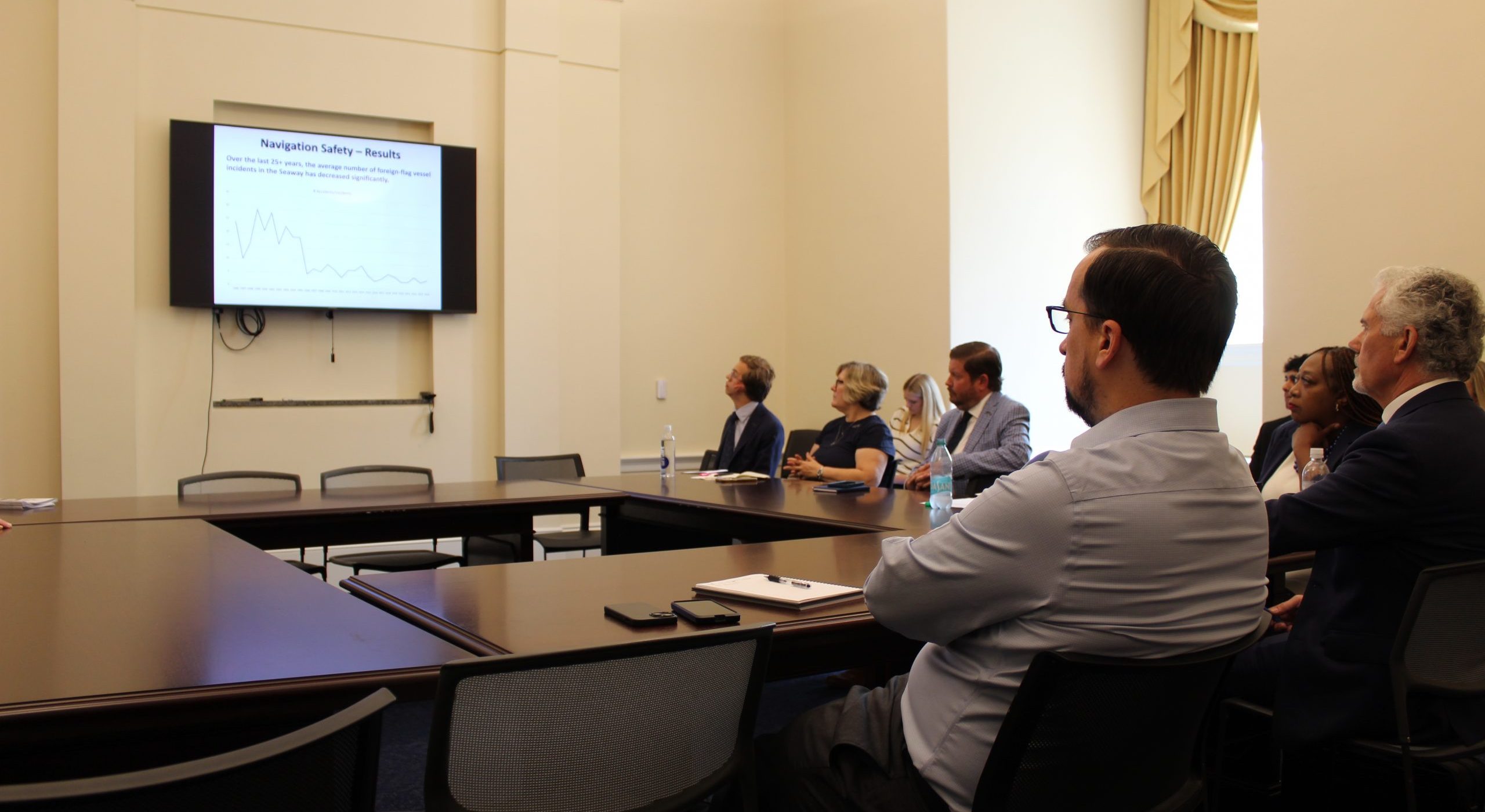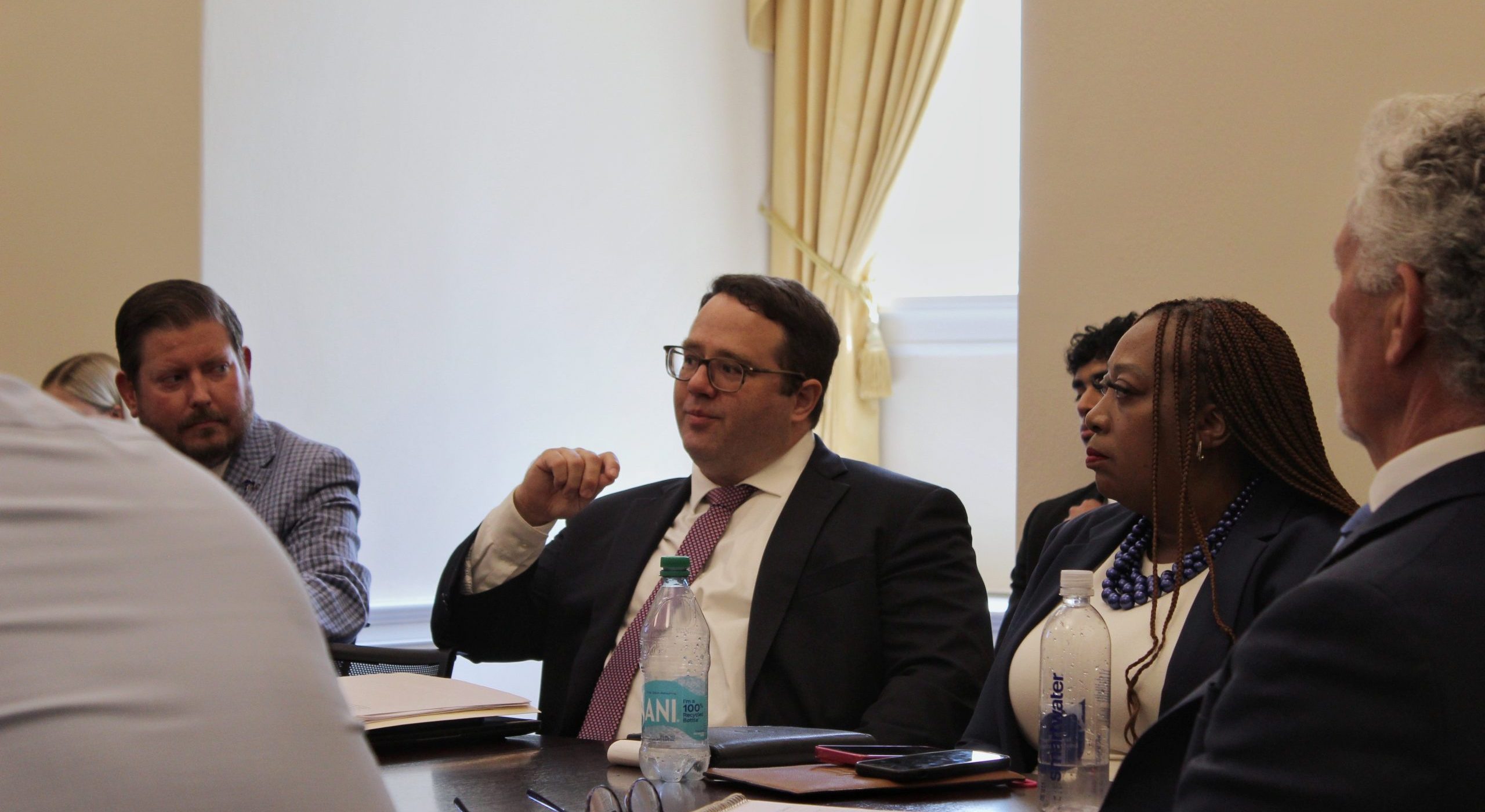On Wednesday, July 9, NEMWI hosted a briefing on shipping in the Great Lakes. Panelists included Anthony Fisher, Deputy Administrator of the Great Lakes St. Lawrence Seaway Development Corporation (GLS); Debra DiCianna, Director of Environmental and Regulatory Affairs of the Lake Carriers’ Association; and Brian Oszakiewski, Executive Director of the Great Lakes Ports Association. Mike McCoshen, the new Administrator of the GLS, was also in attendance.
Deputy Administrator Fisher began by discussing the national importance of the Great Lakes region and the lack of awareness it gains from those living outside the region. He noted the Great Lakes’ $6 trillion regional economy, of which shipping on the St. Lawrence Seaway, allowing travel between the Lakes and the Atlantic Ocean, is a major piece. The GLS, as an agency of the U.S. Department of Transportation, operates the Eisenhower and Snell locks along the seaway. The organization’s mission in supporting maritime industry within the region grants them varied responsibilities from coordinating shipping routes to enforcing ballast discharge standards. Serving one of the most agriculturally productive regions in the world, Great Lakes shipping is crucial for the export of these goods. The Great Lakes are “essential to soybean, wheat, and corn production and processing, all of which are centered in the region,” Fisher said. Fisher concluded his presentation with a discussion of containerization which the Great Lakes currently lacks, and highlighted the efforts being conducted across different avenues to make that possible, including infrastructure development at the port of Burns Harbor. He emphasized coordination with other transportation networks and communication between the various stakeholders to bolster the domestic shipping industry.
Where Fisher primarily focused on shipping infrastructure, Debra DiCianna of the Lake Carriers’ Association discussed the ships themselves, known as lakers, and the kinds of marine traffic the Great Lakes contains. She described the operations shippers conduct and the hardships the industry faces at the hands of nature. From December through April, the Great Lakes experience an ice season which can slow shipping and reduce consumer stocks. Ice-related delays have cost $2 billion and 10,000 jobs within the last decade alone. Overcoming these obstacles requires U.S. Coast Guard (USCG) icebreaking assets. The benefits of icebreaking reach beyond the industry itself. DiCianna also showed that, without icebreaking, local communities could suffer, such as in the case of severe flooding along the St. Clair River in February 2021. DiCianna conveyed the need for more shipping support, especially in the case of icebreakers. The Great Lakes, with 4,500 miles of coastline has just one heavy icebreaker and nine total USCG ice assets, dwarfed by the 25 along the Atlantic coast with just half as much coastline. Funding for a Great Lakes heavy icebreaker was included in the House version of the “One Big Beautiful Bill Act” but was left out of the final version.
During his presentation, Brian Oszakiewski from the American Great Lakes Ports Association placed great emphasis on the strategic importance of the Great Lakes as the “transportation hub of our country,” talking about the vital role that cargo movement through the 16 commercial ports plays for local communities and the national economy as a whole. He highlighted that port directors in the US all come from different backgrounds– ranging from mariners to business leaders– and form “a very dynamic and vocal group” that unites in its aim to create a better future for the ports in the region. Oszakiewski also stressed the significance of the binational relationship with Canada when it comes to shipping in the Great Lakes, noting that much of the region’s grain exports depend on access to the Seaway, the control of which lies largely in Canadian hands. He then went on to celebrate recent progress in federal support, including an increase in Port Infrastructure Development Program funding for Great Lakes ports. Historically, Great Lakes ports have received just 2–3% of PIDP funding, but that number jumped to 14% this past year. The FY26 President’s Budget requests $550 million for the PIDP, which combined with $450 million in IIJA funding would total $1 billion for the program, the highest ever appropriation. These two factors in tandem could mean that Great Lakes ports get a larger piece of a larger pie. Oszakiewski also pointed to the new Soo Lock, which he described as a project of national significance for commerce and security, as a critical investment. The Locks employ 87,000 Americans, and a lock failure would be catastrophic for the Great Lakes economy. Oszakiewski also discussed various challenges that are currently faced, including recent conversations about port fees, harbor maintenance funding, and environmental concerns. Oszakiewski called for continued collaboration with the Congress and federal partners like the Coast Guard and advocated for breaking down barriers to entry that currently limit the competitiveness of Great Lakes shipping.
